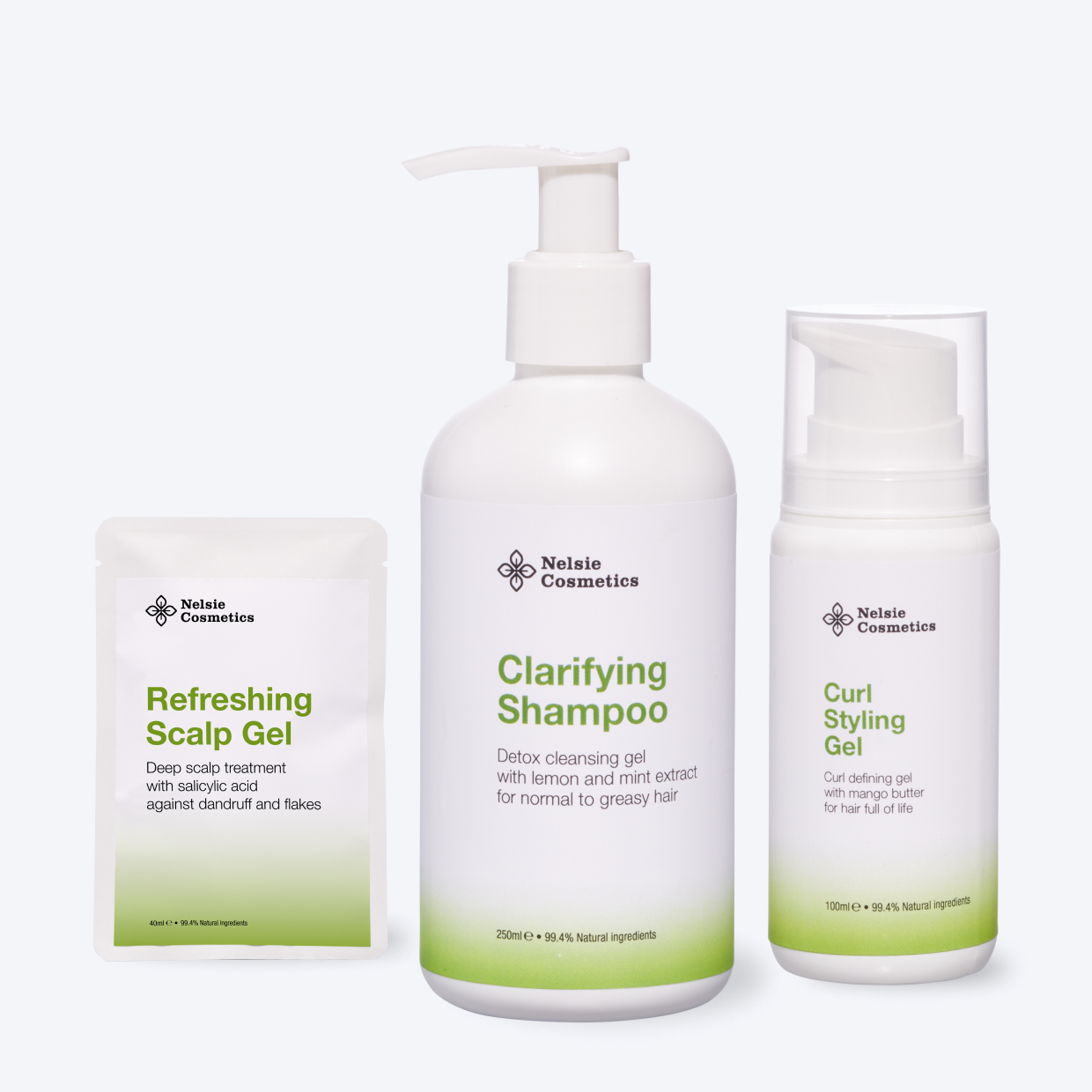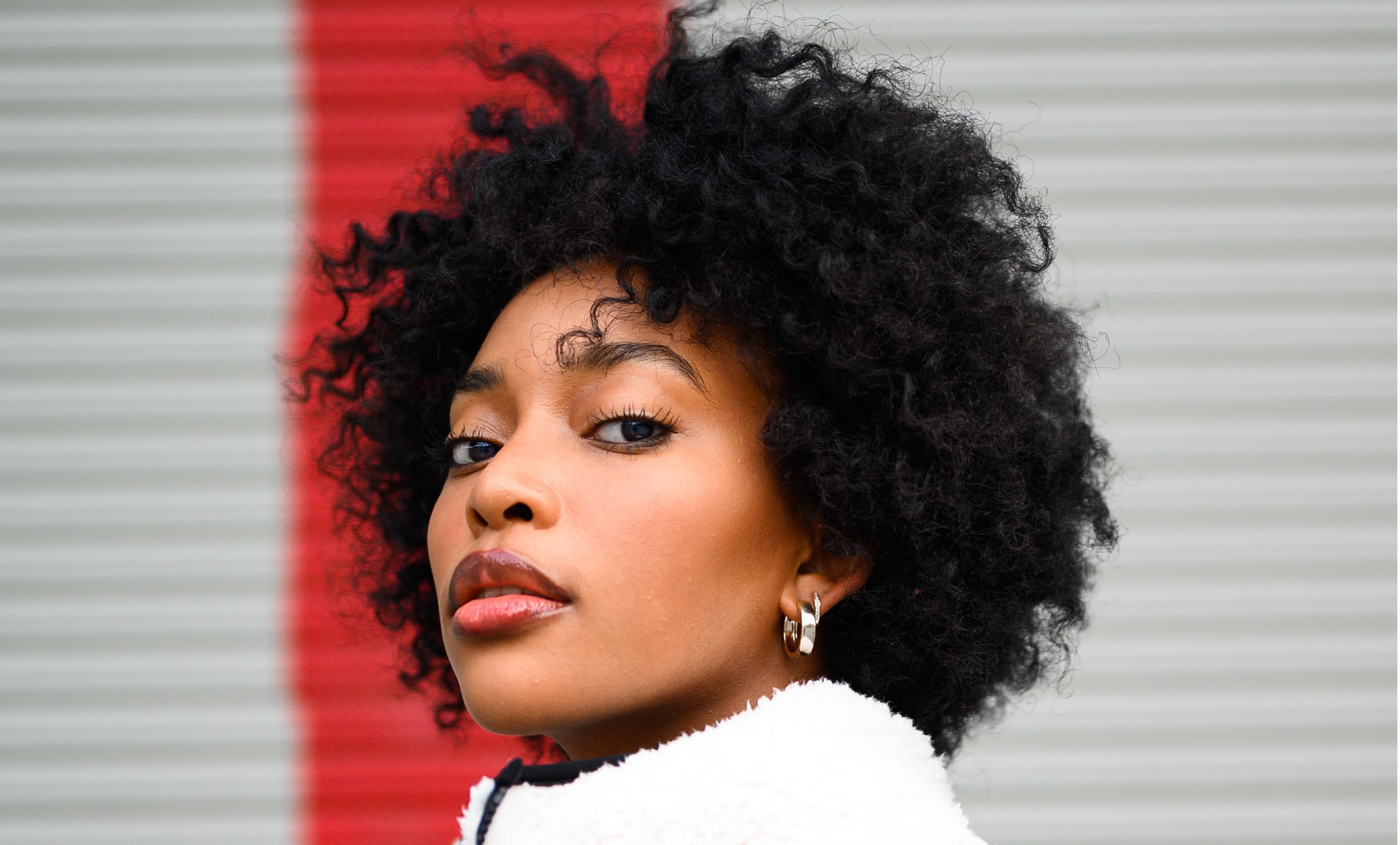The term textured hair is used to describe hair that is not straight, that is wavy, curly or frizzy, and whose care can sometimes be a little complicated. The hair tends to be dry, frizzy or the curls are uneven.
For vibrant curls that are easy to maintain, it’s essential to choose the right care routine for your hair. The question is: what’s the right routine for my hair? To help you define your routine, answer the following 4 key questions:
1 — What condition is my scalp in?
Healthy hair starts with a healthy scalp, because beautiful hair is directly linked to a healthy scalp. What’s more, the health of the scalp has an impact on your well-being, because if it’s unhealthy, it will tend to itch and form dandruff. Dry dandruff, which peels off and falls onto clothing, appears when the scalp is very dry, in the event of irritation or when the hair is styled too tightly. The other type of dandruff is oily, which tends to adhere to the scalp and form patches that are difficult to remove. It is linked to excessive sebum secretion and is sometimes a reaction to irritation.
The best way to stimulate hair growth is to activate the scalp with the right care products and regular massage with a hair oil.
2 — How porous is my hair?
This question will help you get to know your hair. Porosity defines the hair’s ability to absorb and retain moisture and care. Non-porous hair has trouble drying, quickly becomes greasy and needs to be washed regularly, whereas porous hair tends to stay dry, even after applying care products, which it absorbs completely. Several factors influence the porosity of hair, in particular frequent colouring and hot or chemical straightening, which make hair porous.
What’s more, hair porosity can vary within the same person. Hair can be non-porous near the roots and become more porous towards the ends. This is often the case with people whose hair is naturally non-porous, but as it is damaged, it becomes increasingly porous and fragile. It is also common to find people with hair that is porous at the front and non-porous at the back. This means that porosity is an interesting piece of information, but not an end in itself. There’s no need for complicated tests, just observe how quickly your hair absorbs care products and how long it takes to dry.
Porous hair is hair that appreciates oil-rich treatments. It absorbs care but can’t retain moisture. It feels thirsty! Coloured, chemically treated or damaged hair is often very porous. The same applies to wavy hair classified as 3c, 4b or 4c. The right treatment for porous hair is very rich in oil, so it needs to be very nourishing and create a protective film that will retain moisture.
Non-porous hair can be a little greasy towards the roots and dry and porous towards the ends. It takes time to dry and is sometimes still damp the morning after shampooing. They appreciate nourishing treatments with oils that penetrate deeply and are not too heavy. Hair classified as 3a or 4a is often non-porous.
3 — Fine or thick hair?
Textured hair can be of different textures, whether porous or not. Hair thickness varies from 60-120 µm, from single to double. Fine hair appreciates treatments that are light in oil so as not to weigh the hair down, in which case it will be necessary to repeat the application regularly. Thick, porous hair likes treatments that leave a protective film. The right treatments are very greasy and should be applied once a week or every 10 days. On the other hand, for thick, non-porous hair, the treatment should contain dry oils that penetrate deep into the hair, even if the hair is thick.
4 — Is my hair damaged?
Pollution, aggressive shampoos, hard water, colouring, straightening and straightening can be extremely damaging to your hair, leaving it dry, rough and unpleasant to the touch. Aggressive chemical products and environmental factors transform curly hair into unmanageable frizz. Very often, split ends appear at the ends of the hair or, as a result of exposure to all these factors, the hair breaks. Damaged hair is normally more porous. This is why some people have non-porous hair at the roots and porous hair at the ends.
What is the routine adapted to my curls?
To help you choose the products that best suit your situation, we have prepared 4 routines that correspond to the types of problems our clients most often encounter.
Define Curly Hair
Hair care routine for textured hair
ts best, textured hair (wavy, curly or afro) needs to be moisturised and nourished. Choose a conditioner based on your specific needs.
- Gently wash and detangle hair
- Treat hair and scalp with a conditioner adapted to your needs
- Style and refresh curls with a nourishing gel.

Moisturise Fine Hair
Hair care routine for fine, wavy hair type 2
To look good, even fine, wavy hair needs the right amount of moisture that doesn’t weigh hair down and leaves it feeling smooth and dry.
- Repair hair before shampooing
- Gently wash and detangle
- Treat and refresh curls with a nourishing gel
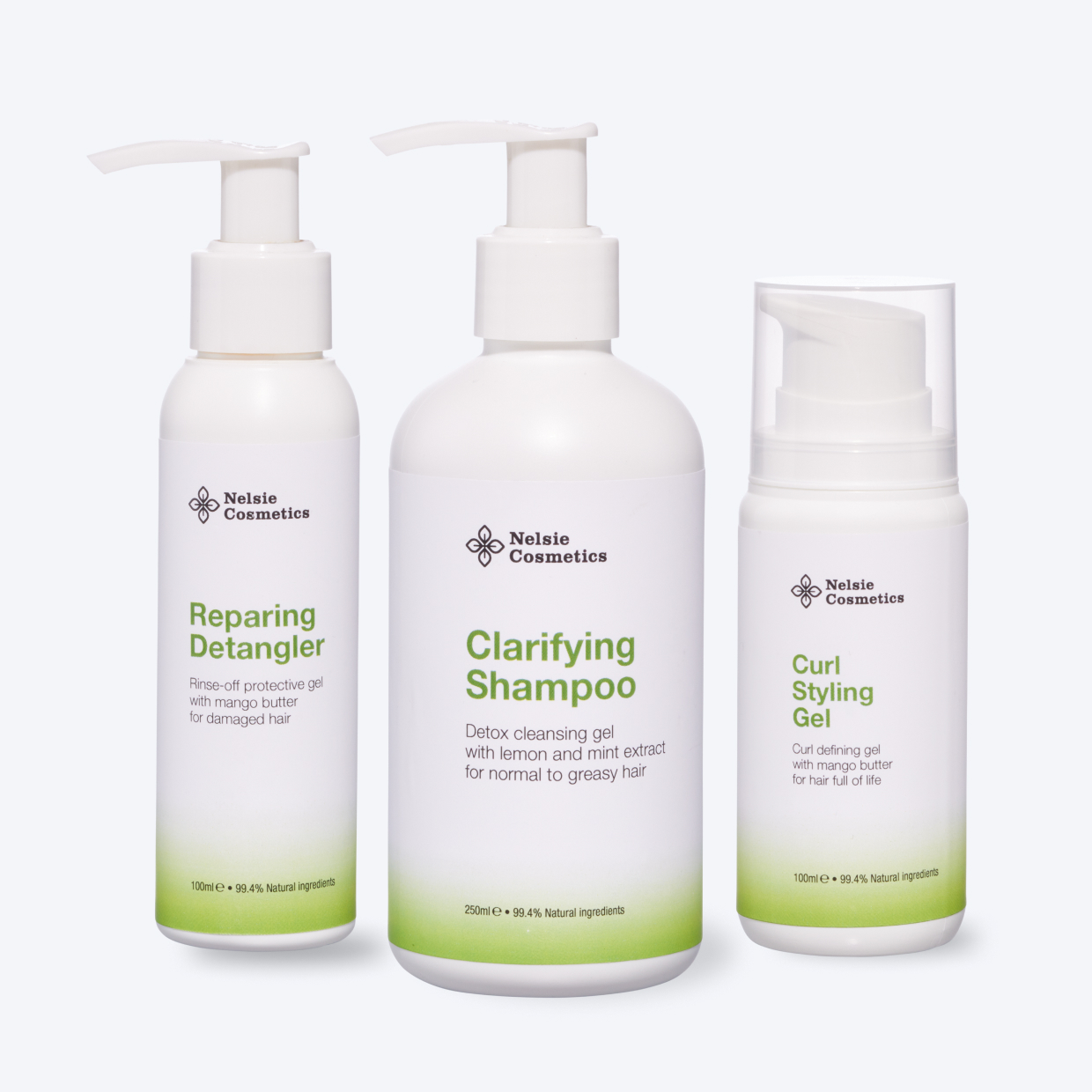
Strengthen Porous Hair
Hair care routine for moisture-deprived hair
Porous hair is like a sponge, absorbing water quickly but drying out quickly. Highly porous hair needs to be moisturised but also nourished and protected with oils that form a film to reduce evaporation.
- Repair hair before shampooing
- Gently wash and detangle
- Treat hair and scalp with a conditioner adapted to your needs
- Style and refresh curls with a nourishing gel.
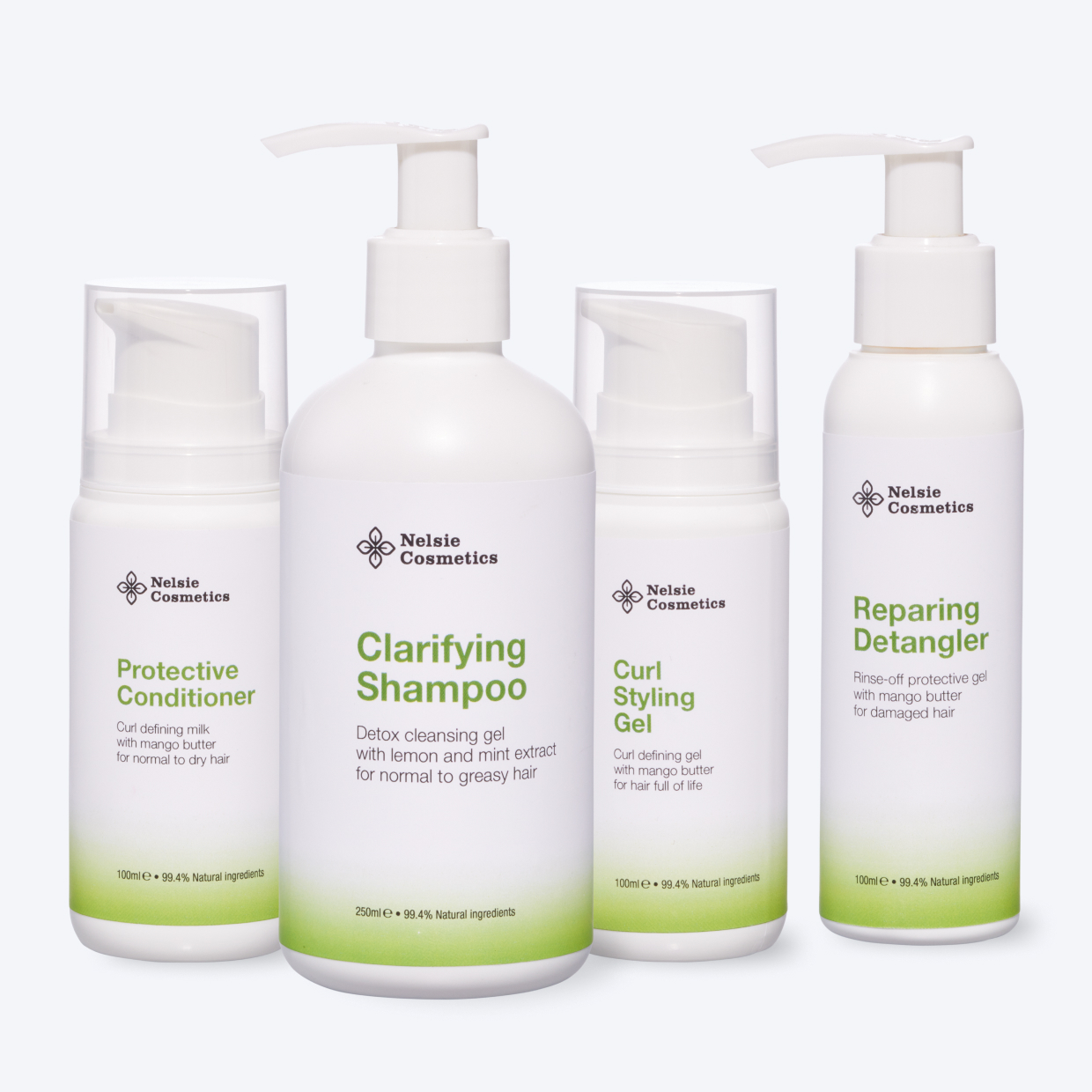
Protect Dry Hair
Hair care routine for dry or damaged hair
Dehydrated, brittle hair or fine, porous hair needs a deep nourishing and conditioning treatment to prevent breakage and retain moisture.
- Co-wash with conditioner instead of shampoo to protect hair.
- Deep condition after washing to lock in moisture.
- Style and refresh curls with a nourishing gel.
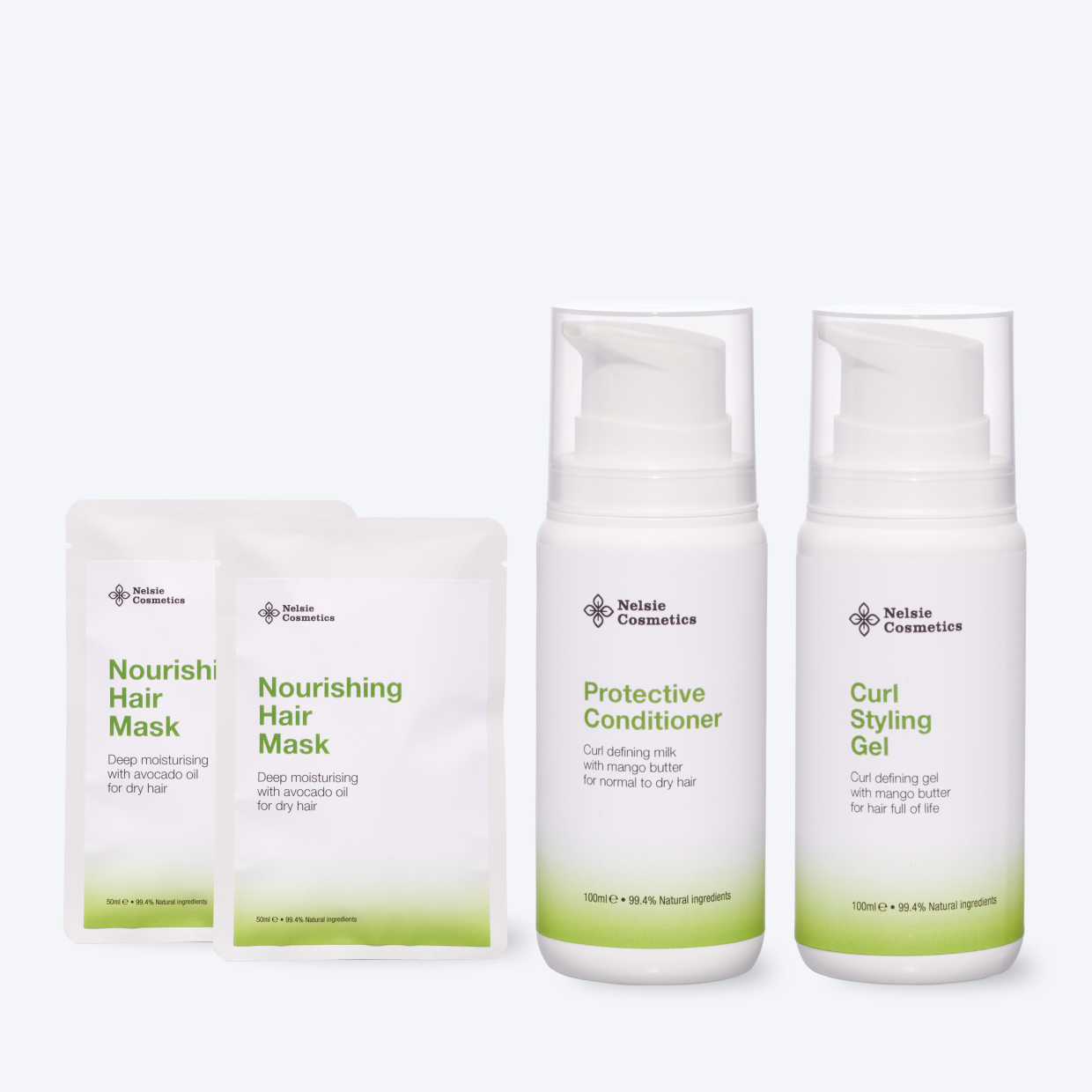
Equilibrate Oily Hair
Hair care routine for hair with excess sebum
When hair tends to be greasy, it’s because the scalp is producing excess oil. Hair struggles to absorb moisture and takes a long time to dry!
- Refresh hair before shampooing
- Gently wash and detangle
- Style and refresh curls with a nourishing gel.
